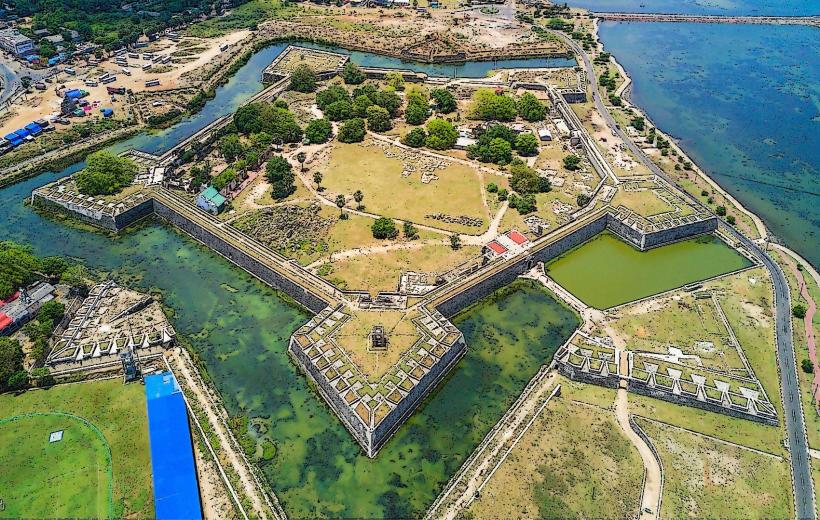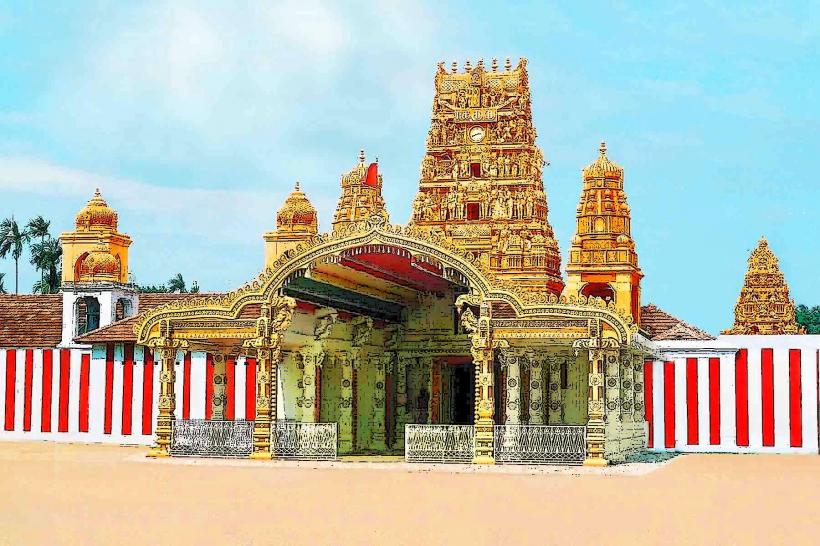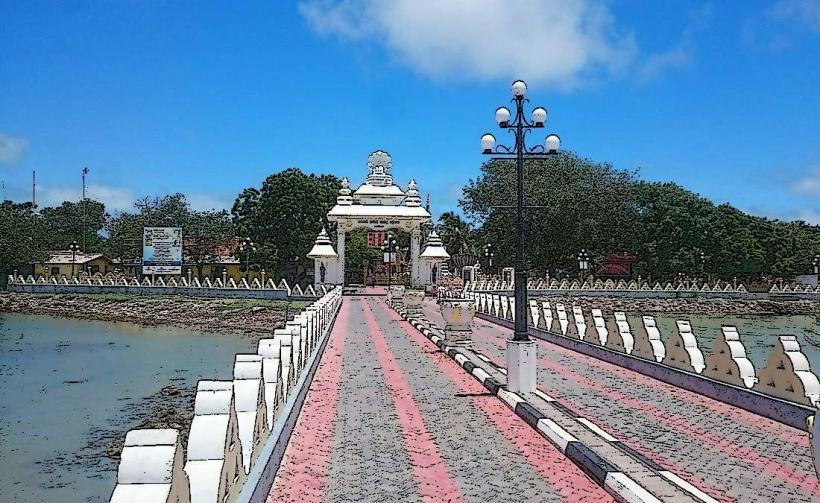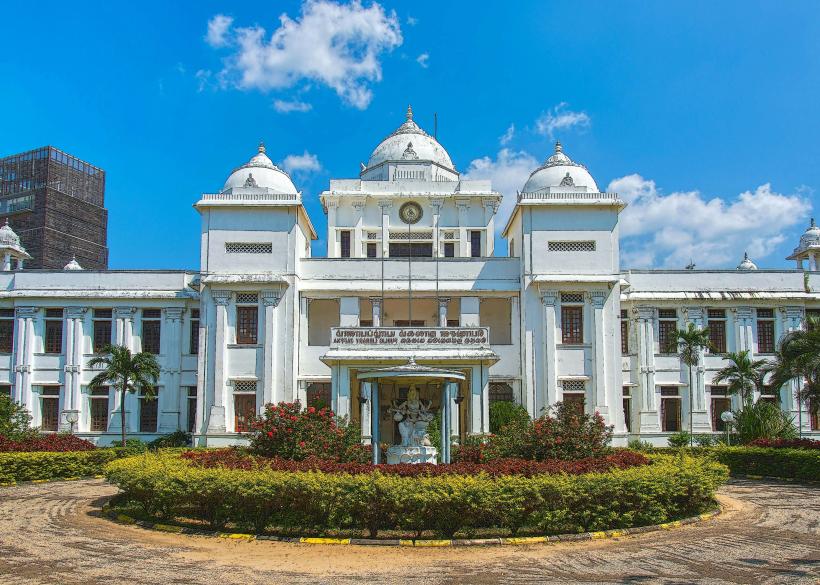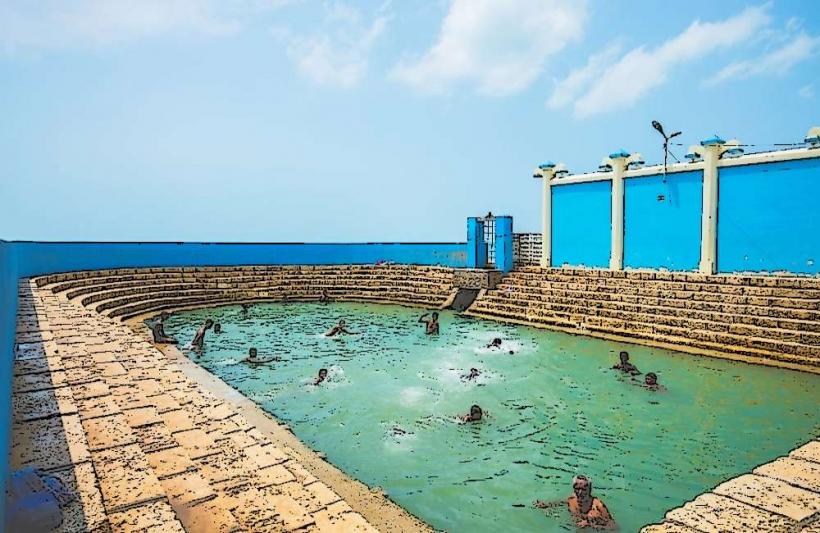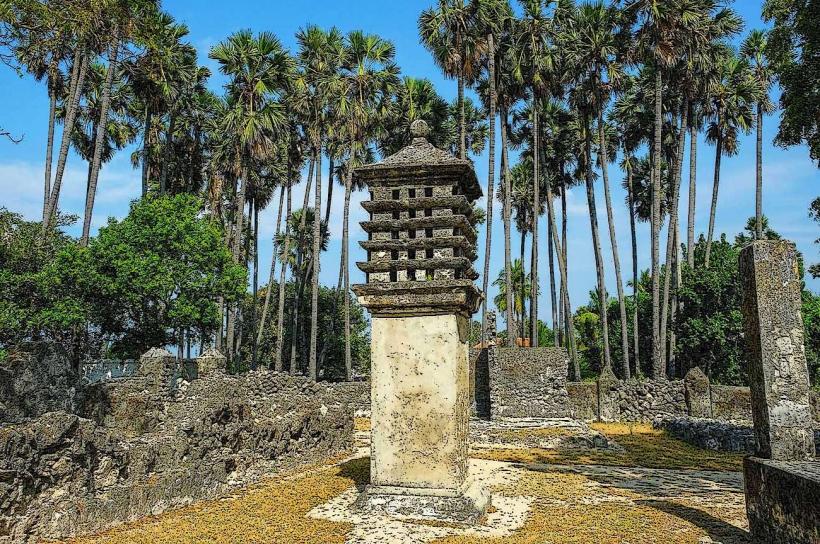Information
Landmark: Nagapooshani Amman TempleCity: Jaffna
Country: Sri Lanka
Continent: Asia
The Nagapooshani Amman Temple is one of the most important Hindu temples in Sri Lanka, located on Nainativu Island, which is part of the Jaffna District in the northern region of the island. This temple is dedicated to the Goddess Nagapooshani (also known as Nagapooshani Amman), a form of the Hindu goddess Parvati, the consort of Lord Shiva. The temple is particularly significant for devotees of the Tamil Hindu community and is a prominent pilgrimage site.
1. Overview
- Location: Nainativu Island, Jaffna District, Sri Lanka.
- Deity: The temple is dedicated to Nagapooshani, a goddess often depicted in her peaceful and benevolent form. She is associated with fertility, prosperity, and protection.
- Importance: The temple is one of the most visited and revered Hindu shrines in Sri Lanka, especially known for its association with the Tamil Hindu tradition.
2. Historical and Mythological Significance
The Nagapooshani Amman Temple holds great religious and mythological importance in Tamil Hinduism, and its history is deeply entwined with the myths of Lord Shiva and Parvati.
Legend of Nagapooshani:
- According to legend, Nagapooshani (Goddess Parvati) performed severe penance at the site of the temple to seek the blessings of Lord Shiva. After her penance, she was granted a boon by Lord Shiva, and as a result, the temple came to be associated with her divine presence.
- The goddess is said to have appeared in the form of a snake (Naga) and is therefore closely linked with the Naga (serpent) worship. This is reflected in the name "Nagapooshani," with "Naga" referring to serpents, which are symbols of protection and fertility in Hindu mythology.
Connection with the Goddess Parvati:
Nagapooshani Amman is worshipped as a manifestation of Parvati, the consort of Lord Shiva. The goddess is revered as a protector of the land and its people, and she is believed to provide blessings for fertility, prosperity, and well-being.
According to local tradition, Nagapooshani also played a role in ensuring peace and harmony in the region, protecting the people from external threats. The goddess's presence is said to bless the island with tranquility and prosperity.
3. Architecture
The Nagapooshani Amman Temple is an excellent example of Dravidian-style architecture, which is characteristic of many Tamil Hindu temples.
Key Architectural Features:
Rajagopuram (Main Entrance Tower): The Rajagopuram, a towering entrance adorned with colorful statues of gods, goddesses, and mythological figures, is the most striking feature of the temple. It is a common architectural element in Hindu temples and represents the divine entrance to the sacred space.
Sanctum (Garbhagriha): The central sanctum of the temple houses a statue of Goddess Nagapooshani. She is depicted in a serene and graceful form, often holding various divine attributes, including a lotus, symbolizing purity and divine beauty.
Vimana: The shrine above the sanctum (Vimana) is beautifully carved with intricate designs, representing elements of Hindu cosmology and mythology.
Pillared Halls and Courtyards: Like many Hindu temples, the Nagapooshani Amman Temple features pillared halls where devotees gather during ceremonies and rituals. The temple’s spacious courtyards are used for processions and festivals.
4. Festivals and Celebrations
The Nagapooshani Amman Temple is a focal point for several major Hindu festivals, which attract thousands of devotees from Sri Lanka and abroad. The temple is renowned for its colorful and vibrant celebrations, particularly during key religious events.
Key Festivals:
Thai Pongal: This is an important Tamil festival dedicated to the harvest and the Sun God. It is celebrated in January and involves offerings to the goddess for a bountiful harvest.
Navaratri: This nine-night festival is one of the most important Hindu celebrations, especially dedicated to the worship of the goddess. Devotees of Nagapooshani Amman celebrate with great fervor, offering prayers, performing dances, and holding processions.
The Annual Festival: The most significant celebration at the temple is the annual festival (often held in April or May). This is when the temple witnesses the grand procession of the goddess, which involves carrying the statue of the goddess around the temple in a decorated chariot. Devotees participate by carrying offerings, performing kavadi (a ceremonial burden), and engaging in other religious activities.
5. Pilgrimage Site
The Nagapooshani Amman Temple is a significant pilgrimage destination for Hindus, especially those from the Tamil community. It is one of the 18 sacred sites of Nainativu Island, which holds religious and spiritual significance for the island's devotees.
Pilgrims come to the temple to seek blessings from the goddess for fertility, prosperity, well-being, and protection. Many visitors come to make offerings, light lamps, and participate in prayer rituals, especially during major festivals.
Nagapooshani is also seen as a guardian goddess, and many devotees believe she provides divine protection from harm and ensures the welfare of her followers.
6. Visiting the Temple
Nagapooshani Amman Temple is located on Nainativu Island, which is accessible from the Jaffna Peninsula via a short boat ride.
How to Get There:
By Boat: Visitors can reach Nainativu Island by taking a ferry or boat from Kurikkaduwan, located on the mainland. The boat ride takes around 15-20 minutes and offers scenic views of the surrounding coastline.
By Foot: After arriving on the island, visitors can walk to the temple, which is situated at a central location on the island.
Opening Hours:
- The temple is generally open to visitors throughout the day. Early mornings and late afternoons are the best times to visit when the weather is cooler, and the temple is less crowded.
Dress Code:
- Visitors are required to dress modestly when visiting the temple. This typically includes covered shoulders and knees. Shoes must be removed before entering the temple.
Entrance Fee:
- There is usually no entry fee to visit the temple, but donations to support its upkeep are welcomed.
7. Why Visit Nagapooshani Amman Temple?
Religious and Cultural Importance: The temple is deeply rooted in Tamil Hindu culture and religious practices. Visiting the temple allows one to experience the spiritual devotion of the local community and learn about the rich traditions of Hinduism in Sri Lanka.
Architectural Beauty: The temple’s Dravidian-style architecture is intricate and impressive, with its towering entrance, ornate carvings, and serene sanctum.
Pilgrimage and Blessings: For Hindu devotees, the temple is a place of spiritual significance, offering an opportunity to seek the blessings of Nagapooshani Amman for protection, fertility, and prosperity.
8. Nearby Attractions
- Nagadeepa Purana Vihara: Another significant site on Nainativu Island, this Buddhist temple is closely associated with the Buddha's visit to the island.
- Jaffna Fort: A historic site that offers insight into the colonial past of Sri Lanka.
- Casuarina Beach: Located nearby, this beach is known for its tranquility and natural beauty.
9. Conclusion
The Nagapooshani Amman Temple is not just a place of religious worship but also an essential symbol of the Tamil Hindu community in Sri Lanka. The temple’s rich history, stunning architecture, and vibrant festivals make it an attractive destination for pilgrims and tourists alike. Visiting the temple offers a unique insight into the island's Hindu traditions and provides an opportunity to experience the serenity and spiritual atmosphere of this sacred site.

